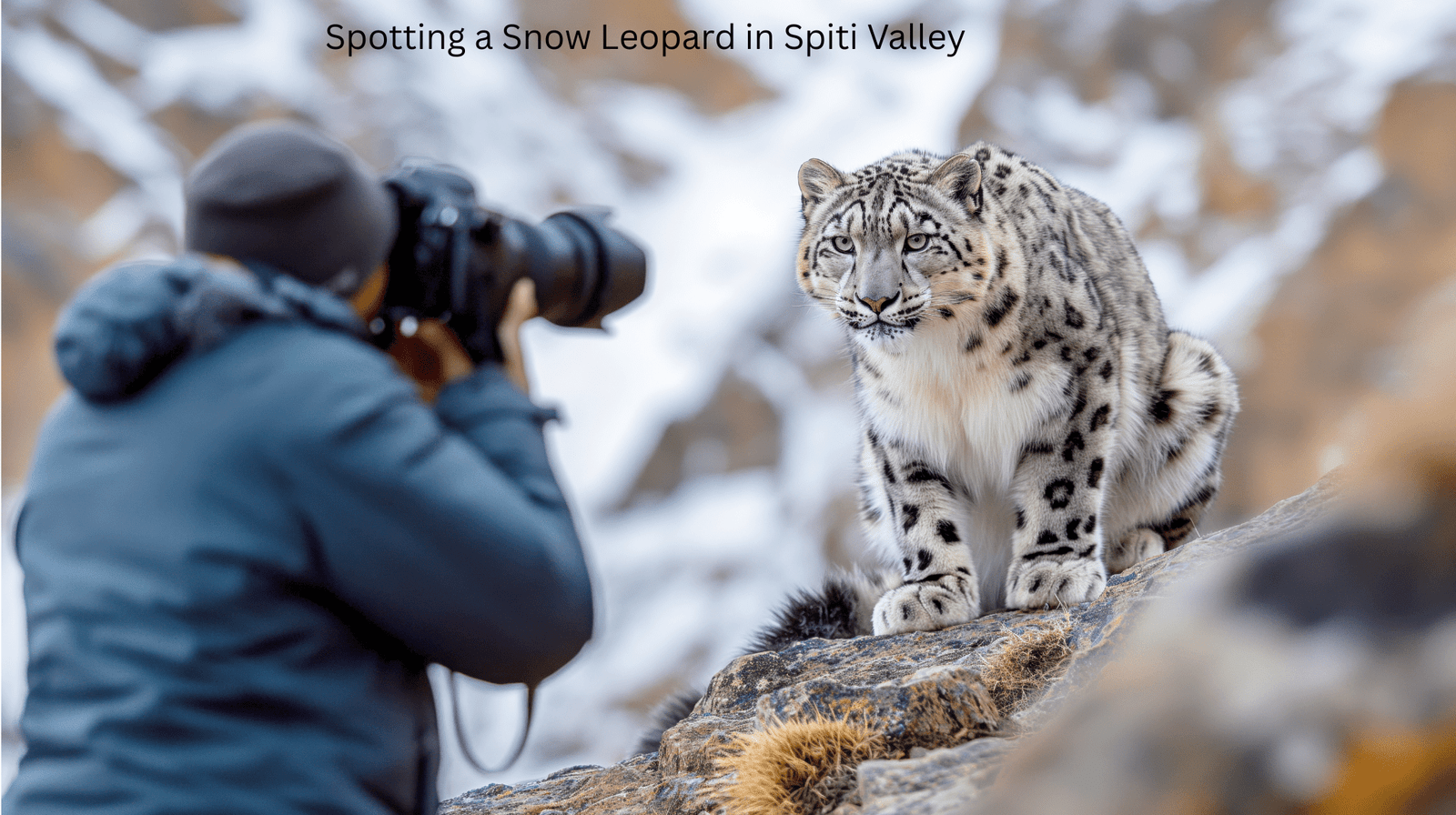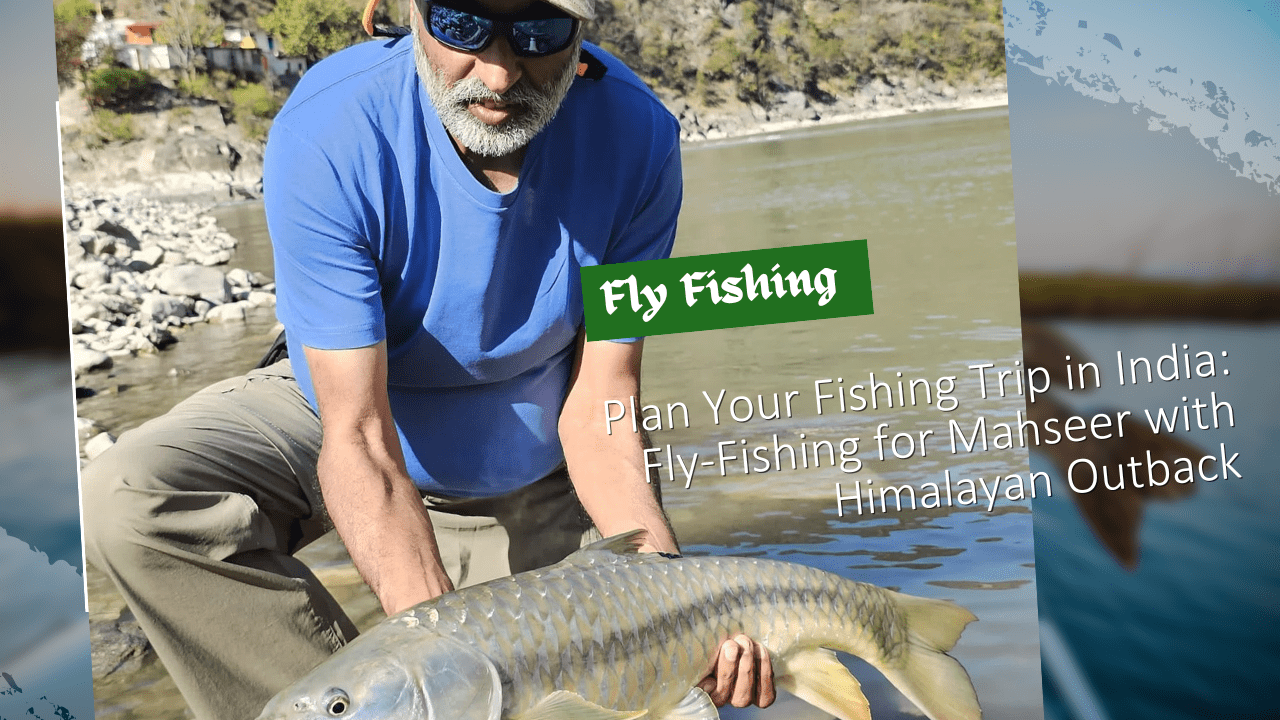Somewhere high in the Himalayas, a pair of golden eyes watches from behind a ridge. The animal moves like smoke across the snow—silent, graceful, nearly invisible. For decades, the snow leopard has been a phantom of the mountains, rarely seen and even more rarely photographed. But in Spiti Valley, something remarkable is happening. These elusive cats are showing up more often, and travelers from around the world are making the journey to catch a glimpse.
Spotting a snow leopard in Spiti Valley isn’t easy. It requires patience, preparation, and a bit of luck. But the odds are better now than they’ve ever been. With conservation efforts gaining ground and local communities working to protect these endangered cats, Spiti has become one of the best places on Earth to witness this majestic predator in the wild.
This is what it really takes to find one.

Why Spiti Valley Has Become a Snow Leopard Hotspot
Spiti Valley sits in the remote rain shadow of the Himalayas, where the landscape is harsh, the air is thin, and the winter cold cuts deep. It’s not the kind of place most people visit by accident. But for those who do venture here, the reward can be extraordinary.
In recent years, sightings of the snow leopard in Spiti Valley have increased dramatically. What was once a near-impossible quest now has a success rate approaching 50% during peak winter months. That’s higher than almost anywhere else in the Himalayas.
There are several reasons for this shift. Heavy snowfall pushes snow leopards down from the highest peaks to lower elevations where prey is more accessible. Conservation programs have also played a crucial role. Local communities, once threatened by livestock predation, now see the value in protecting these cats. Homestays and guided treks have created economic incentives for coexistence. Wildlife sanctuaries like Kibber have become safe havens where snow leopards can roam without fear of poaching.
The result? A slowly recovering population and more frequent encounters with travelers willing to brave the Spiti winter.
Understanding the Snow Leopard: The Grey Ghost of the Himalayas
Snow leopards are solitary hunters built for high-altitude survival. Their thick fur provides insulation in temperatures that can plunge to -40°F. Long tails help them balance on steep terrain and double as scarves during rest. Their paws are wide and fur-lined, acting like natural snowshoes.
These cats typically roam between 3,000 and 4,500 meters above sea level, stalking prey like blue sheep and Himalayan ibex. They’re most active at dawn and dusk, which is why serious leopard seekers start their days in freezing darkness.
Despite their power, snow leopards are shy. They avoid humans when possible. Getting close to one requires understanding their behavior—knowing where they hunt, how they move, and when they’re most likely to be visible.
The IUCN lists them as endangered, with global populations estimated between 4,000 and 6,500 individuals. Habitat loss, poaching, and climate change continue to threaten their survival. But in Spiti, the tide is turning.
The Best Time to Search for a Snow Leopard in Spiti Valley
Timing is everything. Most successful sightings happen between January and March, when heavy snow forces leopards into lower valleys. The terrain is brutal during these months—roads are often blocked, temperatures hover well below freezing, and daylight is limited. But these are also the months when prey animals gather in accessible spots, drawing predators out of hiding.
Summer and autumn offer more comfortable conditions, but sightings drop significantly. The cats retreat to higher, more remote areas where visibility is poor and terrain is treacherous.
If your goal is to see a snow leopard in Spiti Valley, winter is non-negotiable. You’ll need cold-weather gear, physical endurance, and mental resilience. But the reward is worth it.
What to Expect on a Snow Leopard Expedition
A typical snow leopard expedition in Spiti Valley lasts anywhere from seven to fourteen days. You’ll base yourself in villages like Kibber or Chicham, which sit at elevations above 4,000 meters. Days start before sunrise. Guides scan the mountains with spotting scopes, searching for movement or tracks. Once a leopard is located, the real work begins.
Patience is the primary skill required. You might spend hours crouched behind rocks, binoculars pressed to your face, waiting for the leopard to reappear. Sometimes it does. Sometimes it doesn’t.
Physical fitness matters. The altitude alone is challenging, and you’ll be hiking across snow-covered ridges and rocky slopes. Acclimatization is essential—spending a few days at moderate elevation before heading higher can prevent altitude sickness.
Local guides are invaluable. They know the terrain, understand animal behavior, and have relationships with herders who often spot leopards near their livestock. Hiring a reputable guide increases your chances significantly.
The Role of Conservation in Increasing Sightings
The rise in snow leopard sightings isn’t accidental. It’s the result of deliberate conservation work. Organizations like the Nature Conservation Foundation and Snow Leopard Trust have partnered with local communities to reduce human-wildlife conflict. Programs that compensate herders for livestock losses have reduced retaliatory killings. Predator-proof corrals protect animals at night.
Community-based tourism has also transformed attitudes. Villages that once saw snow leopards as threats now view them as assets. Homestays, guided treks, and wildlife tours generate income that wouldn’t exist otherwise. Protecting the leopards has become economically beneficial.
The Kibber Wildlife Sanctuary plays a central role. It’s home to an estimated 30 snow leopards, making it one of the densest populations in the Himalayas. Rangers monitor activity, track movements, and work with researchers to better understand these elusive cats.
This isn’t just about tourism. It’s about creating a sustainable model where people and predators can coexist.
Preparing for the Journey: What You Need to Know
If you’re serious about spotting a snow leopard in Spiti Valley, preparation is critical. Start with the right gear. Layered clothing is essential—thermal base layers, insulated jackets, windproof shells. Temperatures can swing dramatically, and staying warm is non-negotiable.
Footwear should be waterproof and insulated. You’ll be walking on snow and ice, often for hours. Trekking poles help with balance. Sunglasses and sunscreen are necessary—the sun at high altitude is intense, even in winter.
Acclimatization can’t be rushed. Spend at least two days adjusting to the altitude before heading into higher elevations. Symptoms like headaches, nausea, and dizziness are signs to slow down.
Travel permits are required for certain areas. Make sure your documentation is in order before you arrive. Roads can close without warning, so build flexibility into your schedule.
Finally, manage expectations. Even with a 50% success rate, there’s no guarantee. Some travelers spend two weeks in Spiti without a single sighting. Others see multiple leopards on their first day. Luck plays a role.
Beyond the Leopard: Why Spiti Valley Is Worth the Trip
Even if you don’t see a snow leopard, Spiti offers plenty of rewards. The valley is home to other high-altitude wildlife—Himalayan wolves, red foxes, Tibetan gazelles, and over 200 bird species. The landscape alone is worth the journey—vast, barren, and starkly beautiful.
Ancient monasteries like Key and Tabo dot the valley, offering glimpses into Tibetan Buddhism. Villages are small and welcoming, with homestays providing authentic cultural experiences. The night skies are some of the clearest on the planet, perfect for stargazing.
Spiti isn’t a destination you visit casually. It demands respect, preparation, and patience. But for those willing to meet it on its terms, the valley offers something rare: a genuine wilderness experience in a rapidly changing world.
FAQs About Spotting a Snow Leopard in Spiti Valley
How long does it take to spot a snow leopard in Spiti Valley?
There’s no set timeline. Some travelers see one within days, while others spend weeks without success. Most expeditions last 7-14 days to maximize chances.
Do I need a guide to find a snow leopard?
While technically possible to search independently, hiring a local guide dramatically increases your odds. They know the terrain, track animal movements, and have access to community networks that share sighting information.
What’s the success rate for spotting a snow leopard in Spiti?
During peak winter months, success rates approach 50%, which is considered high for this species. Rates drop significantly outside of January to March.
Is it safe to travel to Spiti Valley in winter?
Winter travel requires preparation. Roads can be treacherous, temperatures are extreme, and altitude sickness is a real risk. Travel with experienced guides and ensure you have proper gear and permits.
Can I photograph a snow leopard if I see one?
Yes, but distance matters. Snow leopards are typically spotted from hundreds of meters away. A telephoto lens (300mm or longer) is essential for quality photos.
The Reward of Patience
Spotting a snow leopard in Spiti Valley isn’t just about checking a box on a wildlife bucket list. It’s about immersing yourself in one of the most remote and beautiful landscapes on Earth. It’s about supporting conservation efforts that protect endangered species. And it’s about experiencing the thrill of encountering an animal that has adapted to survive in one of the planet’s harshest environments.
The journey is demanding. The cold is relentless. The wait can be long. But when that grey ghost finally appears on a distant ridge, everything else falls away. For a few precious moments, you’re witnessing something extraordinary—a creature that has survived against all odds, thriving in a place where few others can.
That’s what it really takes to spot a snow leopard. And that’s why it’s worth every frozen sunrise.






